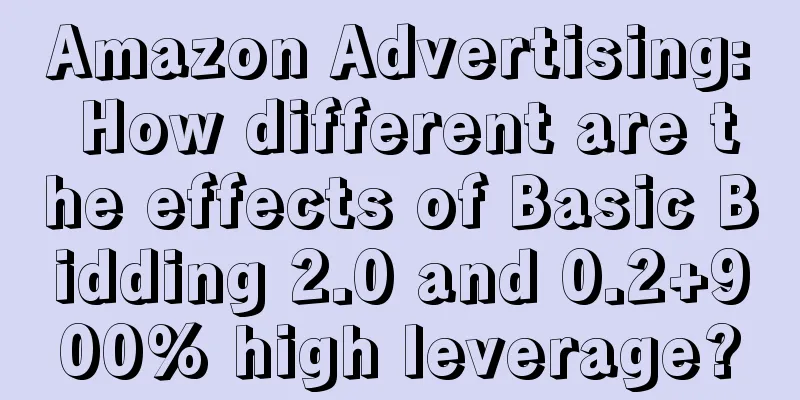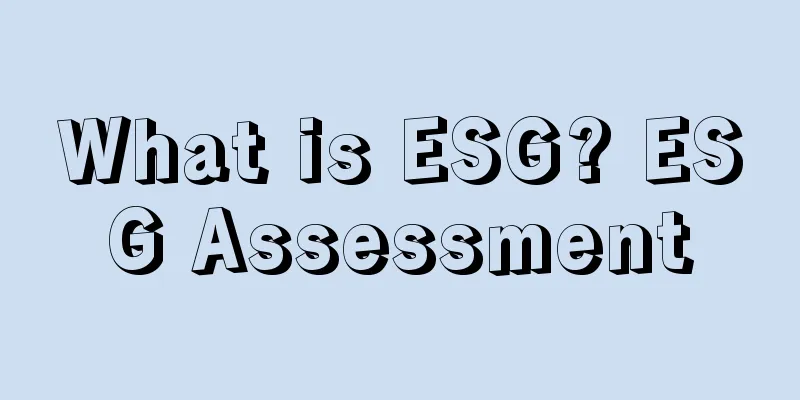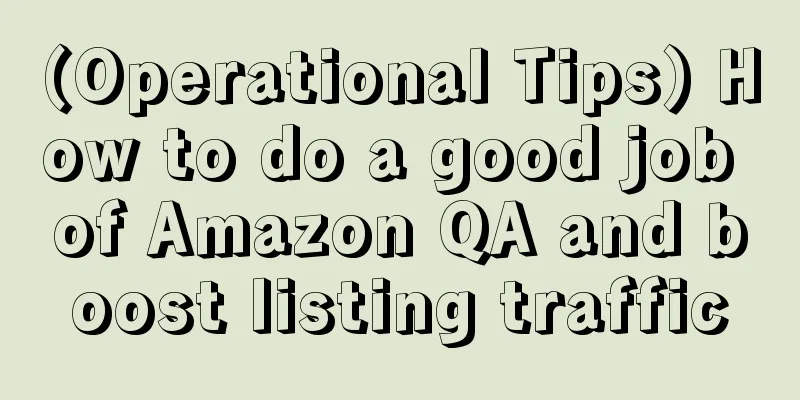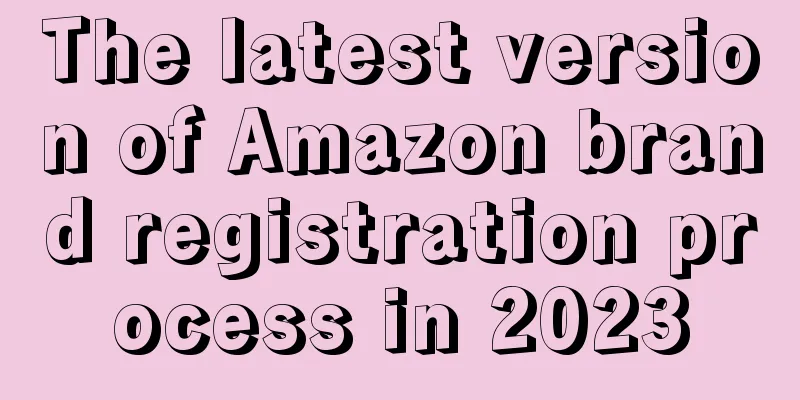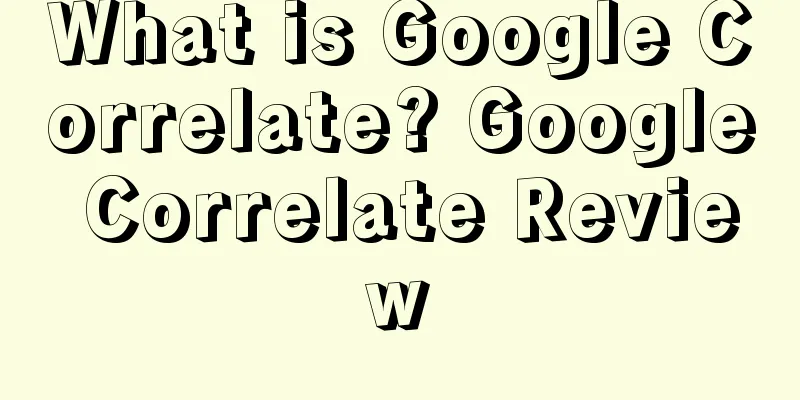|
Anonymous user Prerequisites (to exclude unnecessary influence): Single campaign, single ad group, single ASIN, same delivery word, exact match, fixed bid, 999 budget
- Plan 1: Basic bid 0.2, first line of home page 900% (equal to 2.0), other positions 900% (equal to 2.0), product page 900% (equal to 2.0)
- Plan 2: Basic bid 0.5, first line of home page 300% (equal to 2.0), other positions 300% (equal to 2.0), product page 300% (equal to 2.0)
- Solution 3: Basic bidding 1.0, first line of home page 100% (equal to 2.0), other positions 100% (equal to 2.0), product page 100% (equal to 2.0)
- Solution 4: Basic bidding 2.0, 0.0% for the first line of the homepage (equal to 2.0), 0.0% for the rest of the positions (equal to 2.0), 0.0% for the product page (equal to 2.0)
I would like to ask everyone: Are there any differences in the advertising effects and CPC of these 4 solutions for each ad position? (I think there is no difference, because I did not find any explanation indicating the difference in the Amazon backend, but the other two colleagues think there is a difference)
The following is the description of Amazon Advertising Backend
"Wonderful Reply"
Just a Clown - Unity of Knowledge and Action, Cultivation of Both Body and Soul Agree from: Persistence is victory, Crank1259, 某浩, shiqiuyi, Jan1 more » I think there is no difference. I tested it in a similar way. I extended the period and saw no difference. Anonymous user • Shenzhen • 2024-09-14 15:13 I think that if the base bid is relatively low, you just need to calculate it every time you adjust it, and the rest seems to make no difference. But others insist that there is a difference, which somewhat subverts my cognition. Maybe my level is not enough.
Just a Clown • Jinhua • 2024-09-14 15:24 @Anonymous User This is a long story. The industry generally believes that the base bid will affect exposure to a certain extent. This is a long-standing fixed mindset that has been passed down by word of mouth for so long, and Amazon has not provided any written confirmation or refutation. In the end, it all depends on whether you believe in experience or logic, and neither may be correct.
But I still believe in logic, so I decided that there is no difference. My reason is that your final CPC is determined by how much traffic Amazon gives you and where you are exposed. If this logic is wrong, then the basic logic of ad ranking is also wrong.
As for why some people feel that the exposure and clicks of high-leverage, low-bid products have become lower in some cases, I think it is because they either did not control the variables well when testing, or they made common sense errors in their conclusions about the data feedback.
For example, someone once asked me why after he leveraged 100% at the top, his actual CPC was higher, but the exposure and clicks decreased. I was speechless after looking at his data. It was obviously the exposure and clicks at the top that were higher than before. It was only because he did not leverage the rest of his ads and products, which resulted in fewer exposure and clicks on products and the rest, and thus a decrease in click exposure of the entire advertising campaign. He mistakenly believed that as long as the leverage exceeded a certain percentage, there would be less exposure. This is a typical lack of testing common sense. I believe that many people have formed a fixed mindset because of this common sense error in their practice. Anyway, this wrong experience cannot convince me at all.
Just a Clown • Jinhua • 2024-09-14 15:33 I forgot which blogger said that their company does not allow general operators to touch the BID+ leverage of advertising space, because 90% of operators simply cannot control it. I now agree with this, so I no longer use data to convince others. Anyway, everyone has their own way to go, so don't interfere with cause and effect. I personally think I can control it. All my SPs, as long as they are single-word single-SKU single-ad campaign, are more than 100% BID+, which does not affect my promotion of new or maintenance of old links.
Anonymous user • Shenzhen • 2024-09-14 17:00 @丑罢了: Thank you for your detailed answer, which can prove my logic. I have been looking for something that can overturn my logic, but I didn’t find it in Amazon’s advertising background. I saw some statements on Zhiwu that - low base bid affects exposure - but there is no explanation, which makes me confused (crying and laughing)
Anonymous user • Shenzhen • 2024-09-14 16:50 I'm not sure, let me ask one more question (covering my face and laughing), are these 3 campaigns for [one keyword]? Figure 3 should have been adjusted? Or is it an Amazon bug? Because the rest of the positions are 0%-0.52, and the product is 100%-0.53.
These three pictures confirm another logic of mine, which I don't know if it is correct or not: for the same keyword and the same ad position in three campaigns, only the high-priced campaign will run out of budget, and the low-priced campaign will run out of exposure. However, [Picture 2] [Product Page] [0.49] has more exposure and clicks than [Picture 3] [Product Page] [0.53]. This makes me a little confused. Logically, [0.53] should be larger than [0.49]. Is it because the [budgets] of the two campaigns are different?
Just a Clown • Jinhua • 2024-09-14 17:05 @Anonymous user Yes, single word, single SKU, single campaign, single matching method; it is not a single word. I can use multiple campaigns to accurately control all variables and make all positions close to the reasonable CPC; it should be that during the adjustment period, a small data leaked out, a small sample error. The budget has no weight, and even the campaign itself has no weight. The weight is on the keyword and ASIN itself. I have also verified that all old ads are archived and reopened, and the weight is inherited in seconds.
Only nine heads • Shenzhen • 4 days ago The question is, why is the CPC of the homepage in Figure 1 0.8, and the CPC of the rest of the positions in Figure 2 0.93? Is the CPC of the homepage lower than that of the rest of the positions?
Green plum tea • Shenzhen • 4 days ago @只送九个头: A single word and a single ASIN can only appear once on the homepage. If it is already occupied, the ad can only run to other positions and product pages. Therefore, it is normal for the CPC of other positions to be so high, because the homepage has been occupied by another ad group. This is a bit like ad dominance
Interesting name Agree from: AAthena, XXHao, 跨跨小小只, shhk1102 In the four options you provided, although the final bid for each ad position is equal to 2.0, due to the different settings of the base bid and multiplier, there may be some subtle effects on the ad performance. The following is an analysis of each option:
Option 1: Base bid 0.2, multiplier 900% Bid settings:
First line of homepage = $0.2 \times (1 + 900%) = 2.0$
The remaining digits = $0.2 \times (1 + 900%) = 2.0$
Product page = $0.2 \times (1 + 900%) = 2.0$
Potential impact:
Although the final bid is 2.0, the base bid is lower and relies mainly on the multiplier to reach the target bid.
If the Amazon algorithm believes that the bid fluctuations caused by the multiplier are large, it may affect the stability of the ad space.
This setting may be more cautious in how quickly the budget is consumed because the base bid is lower.
Option 2: Base bid 0.5, multiplier 300%
Bid settings:
First line of homepage = $0.5 \times (1 + 300%) = 2.0$
The remaining digits = $0.5 \times (1 + 300%) = 2.0$
Product page = $0.5 \times (1 + 300%) = 2.0$
Potential impact:
The base bid is higher than Option 1 and the multiplier is relatively low, so the adjustment is smaller.
It may be more stable for advertising results because the multiplier is not as extreme as in option 1 and it is easier for the algorithm to understand your goals.
CPC may be slightly higher, but overall more stable.
Option 3: Base bid 1.0, multiplier 100%
Bid settings:
First line of homepage = $1.0 \times (1 + 100%) = 2.0$
The remaining digits = $1.0 \times (1 + 100%) = 2.0$
Product page = $1.0 \times (1 + 100%) = 2.0$
Potential impact:
The base bid is higher than options 1 and 2, the multiplier is relatively low, and the bid is more direct.
This setting may be viewed by the algorithm as a more direct and stable bidding strategy.
Potentially more consistent ad impressions because the bidding mechanism is simple and clear.
Option 4: Base bid 2.0, multiplier 0%
Bid settings:
First line of homepage = $2.0 \times (1 + 0%) = 2.0$
The remaining bits = $2.0 \times (1 + 0%) = 2.0$
Product page = $2.0 \times (1 + 0%) = 2.0$
Potential impact:
Completely dependent on basic bidding, the simplest and most direct bidding method.
There is no multiplier, the bid is constant, and the advertising effect is easiest to predict and control.
It may be most direct in terms of budget consumption speed and CPC, and is not affected by multiplier fluctuations.
Comprehensive comparison <br>Budget consumption speed: Plan 1 has the lowest basic bid and theoretically consumes the budget the slowest. Plan 4 has the highest basic bid and may consume the budget the fastest.
CPC stability: Plan 4 > Plan 3 > Plan 2 > Plan 1. Because Plan 4 has no multiplier adjustment, it is the most stable.
Ad Position Stability: Option 4 is the most stable because there is no multiplier involved. Option 1 is probably the least stable because the multiplier has the biggest impact.
Algorithm understanding: Amazon algorithm may be more friendly to options 4 and 3 because their bidding logic is simple and clear. Options 1 and 2 may be considered less stable due to the volatility caused by high multipliers.
Summary Although the final bid is equal to 2.0, the setting of the base bid and multiplier will have different effects on the stability of the advertising effect, the stability of CPC, and the speed of budget consumption. A higher base bid (such as option 4) provides the most direct and stable bidding method, while a lower base bid with a high multiplier (such as option 1) may bring greater fluctuations.
My former edge has been smoothed away by life - knowledge is like the sea, and I am just a shell on the beach. Agree from: Carooo, Mr.Color What you are asking is: Are there any differences between these 4 options in terms of advertising effectiveness and CPC for each ad position?
The CPC is indeed capped at 2, which makes no difference; but the difference in advertising effect is huge. If it is a new link, it is difficult for the low bids of options 1 and 2 to even get exposure. If they are opened at the same time, option 4 will definitely have the highest exposure and clicks, and they are mainly on product pages.
If it is an old link, the word you put in has a certain weight and has a relatively good natural ranking. Then all four options are likely to generate clicks, and the number of subsequent clicks will be more obviously different, because the conversion rate of each group is different. It is likely that the ad group with higher click-through rate and conversion rate will have more clicks in the future. This is how the A9 algorithm works. The platform just wants to spend the advertiser's budget faster.
Finally, it depends on whether it is a standard product or a non-standard product. So you and your colleagues will still not have a final conclusion after discussing it. The winner is the king, whoever has the highest performance will be the one who is right~ Hahahahahaha~
naruto331 As a novice, I would like to share my understanding with you. If you have different opinions, please feel free to correct me. I will be very grateful.
Originally I thought there was a difference. On the one hand, the base bid would affect the exposure of the ad (this was also passed on by word of mouth and there was no substantial evidence). On the other hand, I had operated on other platforms before, and the premium rules were different from those on Amazon.
However, I just took a closer look at the description of bid adjustment on Amazon Ads and found that with a CPC of 0.2 plus a 500% leverage, the CPC will become a fixed bid of 1, rather than floating between 0.2 and 1. If the description is correct, I think there should be no difference. In other platforms that I have worked on before, if leverage is added, the bid will be adjusted flexibly, based on market competition and other factors, rather than fixed, so there will be a difference in this case. Anonymous User • Shenzhen • 3 days ago The key point has been mentioned: the base bid will affect the exposure of the ad (this is also passed on by word of mouth, and there is no substantial evidence). The most important thing is this. Whether the base bid will affect the exposure is either metaphysics or experience (crying and laughing)
lucky2024 Agree from: zhejiahuohenlan, ChrisC001, Mr.Color After testing, it is difficult to get exposure in the target position with extremely low bids + high leverage for words without weights or new products. However, after having some weights, this operation can partially achieve the desired goal - just run the target position. As for why some of them cannot be achieved, the reason has not been found yet. Generally, in this case, the medium bid + medium leverage method will be used for transition. Although each position will be exposed, as long as the target position accounts for the largest proportion and the ROAS of the entire activity is acceptable, it can be retained to continue to stabilize the weight. The pure white hat approach feels that when the weight is unstable, you can't do too extreme operations.
Children who can't operate -Be the best version of yourself, be the truest version of yourself
Ad support customer service said there is no difference
Anonymous user Agree with: Just a clown Is one plan to add it to every position in the same campaign? I have not tried this. I only add it to the homepage, or only add it to other positions. The standard for CPC is that there should be no exposure and clicks in other positions. If you want to run it on the homepage, you only have exposure and clicks on the homepage. I will run several campaigns and try different CPCs and percentages. Anonymous user • Shenzhen • 5 days ago For example, for the homepage: 0.5 basic bid + 100% VS 0.2 basic bid + 400%. Are there any differences between these two plans for homepage advertising?
Anonymous user • Shenzhen • 5 days ago @Anonymous user’s CPC cannot be too low, otherwise there will be no exposure at all, and the selected words also need to have a certain amount. So we have to test and measure the bid. Then we usually know the approximate data, or we set a higher CPC when testing, such as 2.00, and control the budget to let it run first, so we know the approximate CPC of the product page. If we give a CPC lower than this, it will most likely not run on the product page and other positions, and we will add the percentage of the homepage on this basis. The difference between these two plans will be reflected in subsequent data. I am used to running both. I will not run only one test, but 0.20, 0.30, 0.40, and 0.50, and use different percentages to fix the final CPC to 2.00. After testing, it is generally not necessary to have 2.00 to get clicks on the homepage.
Just a Clown • Jinhua • 4 days ago Your test is more reasonable and has a higher error tolerance rate. I can neither oppose nor completely agree with your conclusion (giving too low a CPC will not work, as there will be no exposure at all). I also have doubts. Because I suspect that when you run multiple tests, you cannot completely control the variables. It is possible that a certain activity performs well when the data base is relatively small, which does not mean that it is the absolute optimal solution. When the data base is small, it is difficult to say that the test results lead to the optimal solution. But I still agree with your testing method. Similar to me, I currently use this method to divide the bids and finally keep one.
In addition to the fact that advertising has multiple touchpoints, any test results we do cannot directly lead to 100% correctness, but can only be more correct than the test methods that are wrong. So I often think that since there is no perfect score, passing or 90 points are actually fine, and they will not affect the achievement of strategic goals.
Linton of Laughter Agree from: Poetic Life, zhejiahuohenlan The base price affects exposure, and the bid affects the position. The four ads have different base bids, so the exposure they get is also different. The ad campaign with bid 2 is more likely to get exposure. Even if the 0.2 ad has a premium of 900, the base price is too low, the exposure is very small, and it is difficult to spend all the budget.
|
